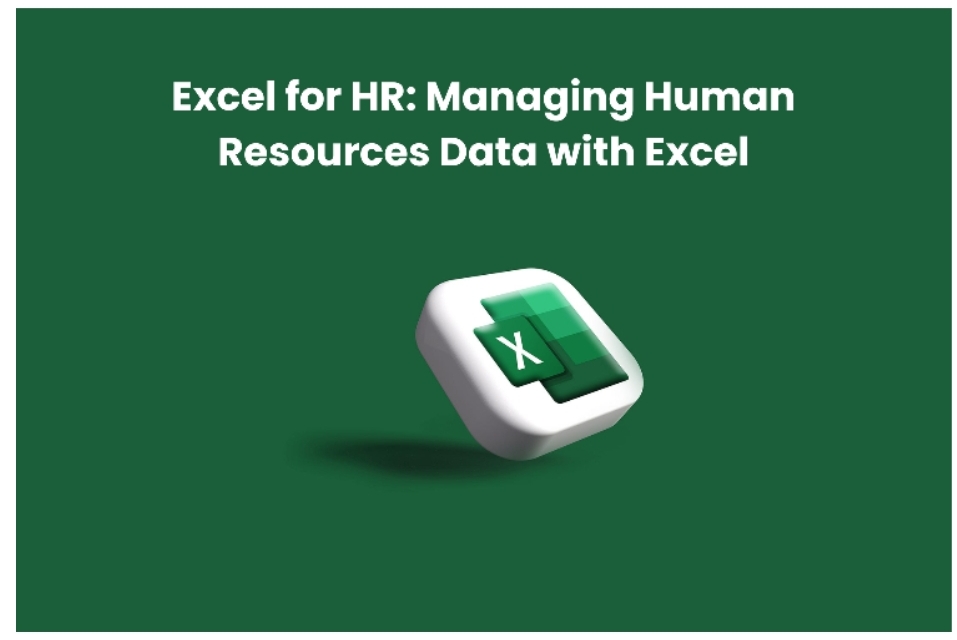Excel for HR: Managing Human Resources Data with Excel

Human resource professionals are increasingly relying on technology to streamline their processes and make informed decisions. Microsoft Excel, with its powerful features and versatility, has emerged as a valuable tool for HR professionals to manage and analyze human resources data efficiently. In this blog, we will explore how HR professionals can leverage Microsoft Excel Training for managing various aspects of HR data effectivel
What is Microsoft Excel?
Using a grid of cells organised in rows and columns, Microsoft Excel is a spreadsheet program that lets users organise, analyse, and visualise data. Numerous features and functionalities are available, such as data analysis tools, mathematical computations, and customisable graphs and charts. Excel is extensively used in various sectors for various tasks, such as project management, data reporting, and financial analysis.
Microsoft Excel Training for HR Professionals
HR practitioners must have a firm grasp of Excel’s capabilities before diving into the intricacies of utilising the programme for HR objectives. HR workers may get useful insights into the features and functionalities essential to their business by enrolling in Microsoft Excel training classes. These courses often cover topics including data input and formatting, formula creation, data analysis tools, and sophisticated features like pivot tables and macros.
By investing in Microsoft Excel training, HR workers may improve their abilities and expertise to fully use Excel for handling HR data. They may learn how to automate tedious operations, make intelligent reports to aid in strategic decision-making and build personalised templates for personnel data management.
Managing HR Data with Excel
Managing HR data is one of the main areas where Excel is quite helpful for HR professionals. Excel offers a versatile platform for managing and arranging HR data, such as payroll information, attendance logs, performance reviews, and employee information. HR managers may manage and monitor employee information more easily by using Excel to construct centralised databases that simplify data storage and retrieval.
The data analysis features of Excel, such as filters, sorting, and conditional formatting, let HR specialists find patterns and trends in their data rapidly. For instance, they may monitor attendance trends to find areas for improvement or analyse employee performance data to identify top performers using Excel. HR managers may more easily convey insights to stakeholders by compellingly visualising their data using Excel’s sophisticated charting and graphing tools.
Automating HR Processes with Excel
The automation of tedious procedures in Excel may greatly increase HR productivity. HR professionals may automate operations like data input, computations, and report preparation by using Excel’s built-in functions and macros. To make inputting new personnel data more efficient, they may, for instance, build templates with predetermined formulae and formatting. Additionally, with a few clicks, they may prepare standardised reports or automate intricate computations using macros.
HR professionals may concentrate on more strategically important areas of their roles by automating these procedures, saving them time and lowering the chance of mistakes. Excel is a flexible tool for optimising HR procedures, enabling HR professionals to tailor their solutions to meet their unique requirements.
Integrating Excel with HR Software
Although Excel is a strong tool for managing HR data, merging it with specialised HR software may improve it even more. Employee scheduling, performance reviews, and payroll administration are just a few functions many HR software packages provide. By integrating Excel with these solutions, HR experts may further improve their procedures and guarantee smooth data flow across systems.
Integration may be accomplished in several ways, such as by establishing direct links with HR software suppliers via APIs (Application Programming Interfaces) or transferring data across systems utilising Excel’s import/export capabilities. HR departments may benefit from this connectivity by reducing mistakes, saving time on manual data input, and ensuring they have access to the most recent data to make wise choices.
Conclusion
HR professionals can effectively handle and analyze human resources data through the robust capabilities of Microsoft Excel. By leveraging Excel’s features, HR professionals can streamline data management, automate repetitive tasks, and gain valuable insights. Investing in specialized Office Applications Courses tailored for HR needs will empower professionals to expand their knowledge and harness Excel’s HR-related functionalities.





